An in-depth look at the historical and political developments that shaped Israel’s current African asylum-seeker crisis — and one way to resolve it that meets Israel’s own needs while doing right by those who most need its protection.
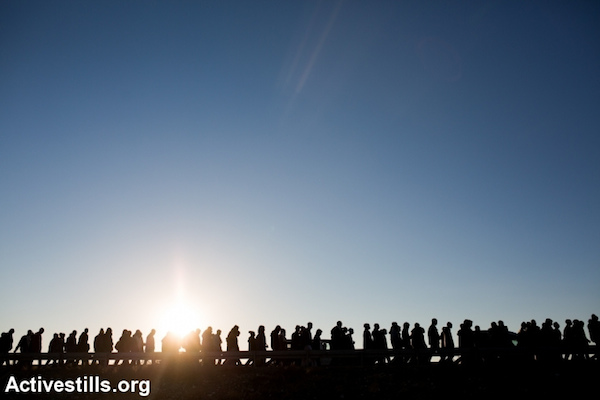
African asylum seekers in Israel have brought their struggle into the limelight in recent weeks. Through acts of civil disobedience, public protests and a mass labor strike, the mostly Eritrean and Sudanese nationals are attempting to shift the public discourse surrounding their presence in the country, gain access to a credible process in which they can seek asylum, and challenge a new law that authorizes their indefinite detention in “open” prison facilities.
Indeed, the way Israel relates to and deals with asylum seekers, refugees and migrant workers is flawed, not only under the international legal obligations it undertook when acceding to the 1951 Refugee Convention and 1967 Protocol, but also in elementary humanitarian and moral terms. That isn’t to say Israel cannot right that wrong and fix its broken system. It can, and it can do so while meeting its own needs and doing right by those who most need its protection, those whom it is obliged to protect. I’ll get to what can be done, but first – how we got to where we are today.
Israel’s current relationship with African asylum seekers began just over eight years ago when Egyptian riot police massacred 28 Sudanese refugees and asylum seekers — mostly survivors of the Darfuri genocide others from South Sudan — who for several months had been camped outside of the UN refugee agency’s (UNHCR) offices in Cairo. Following the massacre, which came on top of the the racism, violence and discrimination Sudanese asylum seekers faced in Egypt, a relatively small number (just over 1,000) of mostly Sudanese made the trek across the Sinai in 2006, and crossed into Israel. Although the first asylum seekers came in small and demographically inconsequential numbers, the Jewish state quickly began shaping its perception of the new arrivals as a crisis that threatened its ethnic identity, and started looking for solutions.
A country founded by and for refugees
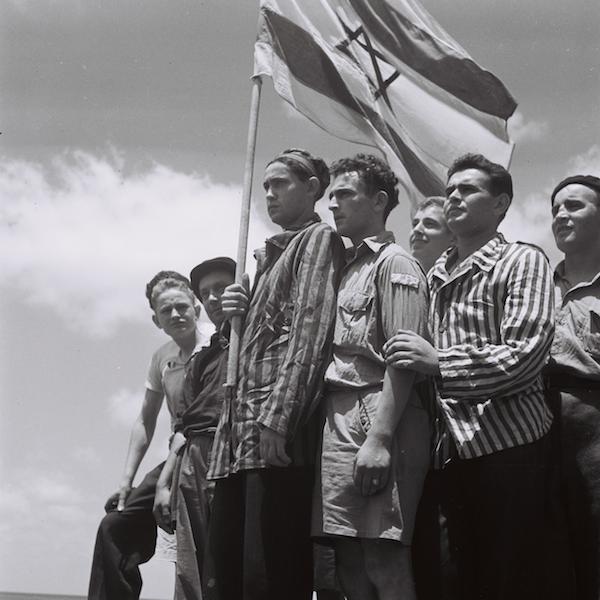
Several events molded the State of Israel’s perceptions and approaches to refugees, which ultimately led successive governments to treat its non-Jewish African population as a demographic threat, or worse.
The first was the Holocaust and the experience of Jewish refugees fleeing World War II Nazi Europe; the 1951 Refugee Convention was largely borne of that experience. In fact, until it was amended in 1967, the Convention only offered protection to those who had been displaced during and immediately following World War II in Europe. In no uncertain terms, the Convention was crafted to resolve one of the same problems that ultimately helped nudge the nascent State of Israel into existence and gave it its raison d’etre — creating a safe haven for world Jewry.
At the same time, Israel was dealing with another refugee problem, one that its own birth created: Palestinian refugees of the 1948 war – the Nakba. While the world was creating new instruments of international law and treaties to resolve and prevent a recurrence of the Jewish refugee problem, Israel was busy creating a very different status for Palestinian refugees with the Prevention of Infiltration Law of 1954. That piece of lasting legislation, which intended to stop Fedayeen sneaking into Israel, created a legal mechanism for preventing the return of Palestinian refugees in direct contravention of the spirit of the Refugee Convention, which ironically, Israel ratified the same year in 1954.
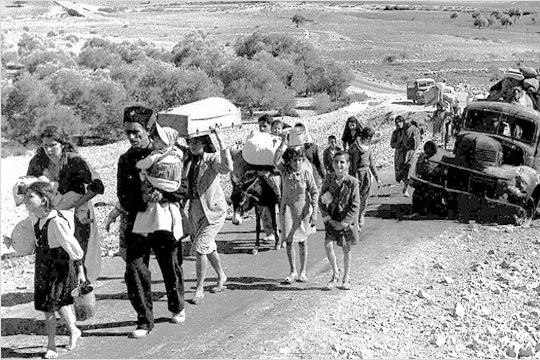
In the same era, Jews from Arab countries began immigrating to Israel, many fleeing various levels and types of persecution. Those newcomers were given Israeli citizenship under the only law on the country’s books — to this day — that regulates immigration: the Law of Return of 1950, which grants automatic citizenship to Jews. Decades later, in the context of countering Palestinian refugees’ advocacy for their own right of return, and in an attempt to counter compensation claims for confiscated and destroyed property, Israel belatedly started referring to these Jewish immigrants as refugees.
The final milestone in Israel’s relationship with refugees came in 1977, in the wake of the Vietnam War. At the time, Vietnamese refugees were fleeing their war-torn country in small boats — for which they were often called “Vietnamese Boat People.” An Israeli cargo ship in the South China Sea picked up 66 passengers from one such stranded and leaking ship and brought them back to Israel after failing to find any foreign port that would accept them. Seeing a parallel between the Vietnamese and Jewish European refugees, who during World War II were refused refuge in port after port, then-prime minister Menachem Begin granted them political asylum and permanent resettlement in Israel. In the coming years, roughly 400 Vietnamese refugees arrived in Israel; many remain in the country to this day.
From refugees to infiltrators
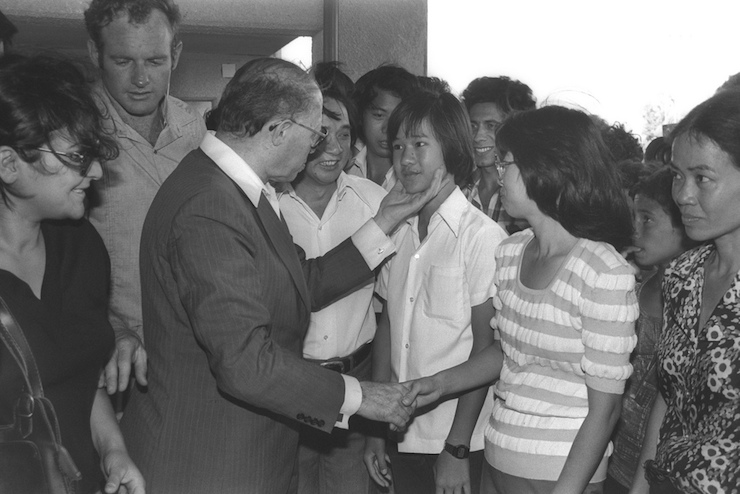
But the Vietnamese refugees in the late 1970s were the last group of non-Jewish refugees who were given any path toward integration in Israel. That is, of course, until the first wave of African refugees arrived in early 2006.
Hundreds quickly turned into thousands, and the lexicon Israelis used to describe the newcomers slowly started to turn hostile; Sudanese refugees became infiltrators, a word that to most Israelis evoked images of Palestinian Fedayeen sneaking across Israel’s early frontiers to launch violent attacks. At the same time, however, the plight of Darfur and the genocide taking place there was very much in the international spotlight, including in Israel.
Pressure mounted to treat African asylum seekers — particularly those from Darfur — the way one might expect of a state founded by and for refugees. The government, at least in parts of its rhetoric, responded accordingly. “Israel, with its history, must offer assistance,” then interior minister Meir Sheetrit was quoted as saying in September 2007. “It can’t stand by and shut its eyes.” At the same time, he added, it cannot take in all of the asylum seekers and must set quotas. The prime minister’s wife held photo-ops with Darfurian asylum seekers. Israeli diplomats echoed the same humanitarian sentiment, both publically and privately. The same month that Sheetrit pledged Israel wouldn’t close its doors on those who need it, Foreign Ministry legal representative Michal Sarig told American diplomats Israel was equipped to take in a maximum of 1,500 asylum seekers a year.
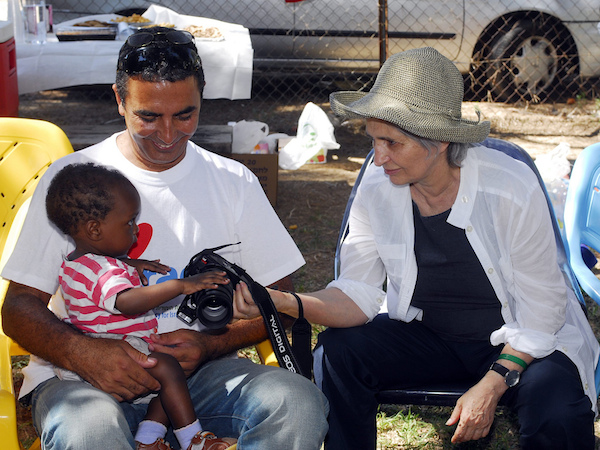
At the same time, the government of then-prime minister Ehud Olmert was desperately looking for ways to both stem the flow of Africans crossing the Egyptian border and to rid itself of those already in the country. In meetings with American diplomats specializing in migration and refugees, Israeli officials sought two paths toward that end. The first, an agreement to resettle refugees in third countries, was shot down by the Americans who suggested it would in all likelihood encourage even more Africans to enter Israel. The second idea was to reach an agreement with Israel’s southern neighbor, in which it could return asylum seekers and economic migrants to Egypt, from which they had crossed into Israel.
Looking for solutions
In theory, there was little stopping Israel from returning Eritrean, Sudanese and other asylum seekers, economic migrants and others back to Egypt. The Olmert government determinedly sought such an arrangement, saying publicly – and in private conversations with American diplomats – that Egypt had agreed to take back many of the Africans. A key component reportedly included an Egyptian commitment not to return asylum seekers to their country of origin, thereby allowing Israel to stay within the bounds of its international legal obligations. The agreement, which was never confirmed or acknowledged by the Egyptians, never resulted in a mass return of Africans to Egypt. Over 1,000 were, however, sent back in what are called “hot returns”; soldiers simply turned asylum seekers back at the border – a serious violation of the Refugee Conventions.
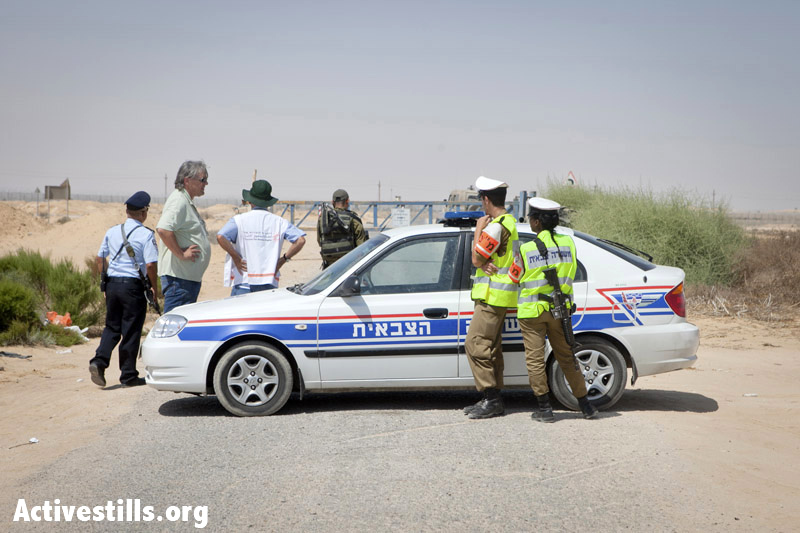
The second part of the short-lived and oft-forgotten arrangement was that the Olmert government agreed to give temporary residency permits to some 500 refugees from the Darfur region of Sudan, although it never granted them refugee status. At the same time, the government continued looking for third-party countries where asylum seekers could be resettled. “The problems should be resolved by the international community, who should ‘share the burden’ both economically and in the acceptance of refugees,” then Justice Minister Daniel Friedman told the American ambassador in mid-2007. That effort continues today: in recent years Israel has made a number of announcements that it is seeking deals with unnamed African countries to which it can offload portions of its asylum-seeker population. As with the Egyptian deal, however, no other country has ever confirmed any such arrangement and the only mass deportations were of Ivorians and separately, South Sudanese nationals once their state gained independence.
With no country to which it could repatriate or deport African asylum seekers — and tales of relative safe haven and economic opportunity spreading — the number of new arrivals in Israel grew exponentially. Thousands turned into tens of thousands and Israel was unprepared to receive, let alone process them and their asylum claims. Hundreds were kept in jails for over a year. The first to be released were restricted to living and working on kibbutzim, often in subpar conditions. For a time they were forbidden from living or working in the economic and geographic center of the country, Tel Aviv. Eventually, most made their way to south Tel Aviv and Eilat where they found work, albeit illegally. Many, especially new arrivals, lived in parks and public bomb shelters.
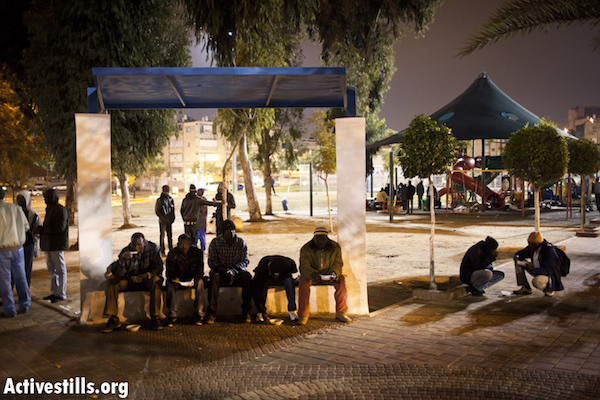
With the number of asylum seekers growing, the media and politicians began discussing their presence and fate more and more – usually in negative terms. Up until mid-2009, UNHCR had been tasked with conducting refugee status determination (RSD) interviews and making recommendations for granting or denying refugee status. (Israel had no mechanism for doing so itself at the time.) Recommendations for or against recognition as refugees, however, still had to be approved by a government-appointed committee and then the interior minister himself. Almost without exception, the Interior Ministry accepted all of UNHCR’s negative recommendations; that was not the case with its positive recommendations for refugee status.
Taking responsibility
At the urging of UNHCR, the United States and others, in mid-2009 Israel decided to take responsibility for registering and examining asylum seekers’ requests for refugee status. After undergoing training by UNHCR and HIAS, Israel’s Interior Ministry opened a unit for conducting RSD assessments and the registration of newcomers, a move that was cautiously welcomed by the UN and others. The Israeli bureaucrats’ reputation, however, was quickly sullied by the results of their own work. Since assuming responsibility for RSD, the Interior Ministry’s rate of recommending refugee status stands at less than 0.2 percent.
For a bit of context, between 2009 and 2012, the United States approved 51.5 percent of asylum applications. European Union member states on average accept just over 25 percent of asylum applications, although that varies greatly from country to country: from nearly 62 percent in Italy, to 8.6 percent in Ireland and 14 percent in Germany.
Of course, in addition to the strictness a country applies in examining asylum claims, different states are generally faced with different asylum-seeking populations, which also affects approval rates. While Chinese and Mexican nationals are the largest groups claiming asylum in the United States, Europe has of late seen an influx of Syrian refugees, South Africa takes in asylum seekers from Zimbabwe, Somalia and the DRC, and Australia sees asylum seekers from Afghanistan, Iran and China.
The two main groups of asylum seekers in Israel, Eritrean and Sudanese nationals, have very high rates of refugee recognition worldwide: 82 percent for Eritreans and 68 percent for Sudanese. In Israel their recognition rate was zero. And yet, that is not the root of the problem.

Even before the Israeli Interior Ministry began conducting RSD on its own, even UNHCR did not generally conduct RSD for Sudanese and Eritrean nationals. The reason? Israel recognizes that the Eritrean regime is a human rights abuser and that anyone it deports there might face persecution and possibly death; so it decided to grant automatic, group protection to Eritrean nationals in Israel. Sudanese were also given group protection, but for a different reason: Israel and Sudan both classify each other as enemy states. The Israeli government says it cannot deport people to Sudan because the two countries lack diplomatic relations, but there is also an added danger from the fact that in Sudan it is a crime for its citizens to even step foot in Israel. In other words, even if Sudanese nationals weren’t classically defined refugees when they left their homes, they should become sur place refugees the moment they cross the Israeli border.
[Listen to the author speak about asylum seekers in Israel]
Shattering a broken system
Because Israel acknowledged that it could not deport Sudanese and Eritrean nationals back to their home countries, it never saw a need to individually evaluate their asylum claims – a practice that is acceptable as a temporary solution when refugees arrive suddenly and in large numbers (like Syrians who today are crossing into Jordan and Turkey). In that regard, Israel more or less was acting in line with international norms, at least in spirit. However, if a state’s expressed policy is to give automatic group protection instead of individually examining asylum claims, it cannot at the same time treat the protected group as infiltrators. Ideally, in such a situation the government should provide them with a legal status and basic social and civil rights, namely health care and work permits.
Of course, Israel has provided Eritrean and Sudanese asylum seekers with none of those rights. Successive governments gave them the most basic protection – against deportation to their home countries – but in all other ways treated them like infiltrators.
That was until 2012, when at the peak of a populist wave of incitement against the asylum-seeker population, the Knesset passed an amendment to the Prevention of Infiltration Law – the 1954 law, you will recall, which kept Palestinian refugees out of Israel. The new amendment authorized the detention of anyone who entered the country without permission for three years, a prison term that was renewable until deportation became possible. At least for Sudanese, that meant indefinitely. The reason? Deterrence. Indeed, Israel already has laws to punish and deter un-permitted stays in the country; by targeting only those who enter without a permit, i.e., by land, the new law was intended only for Africans, who cross into Israel almost exclusively by foot.
Read +972’s full coverage of asylum seekers in Israel
In Tel Aviv, police and immigration authorities exploited the new law to get rid of undesirables, indefinitely locking up without trial asylum seekers who were accused of involvement in crimes or even of “having a criminal background,” but who had not been convicted in any court. Then-interior minister Eli Yishai ordered roundups of African asylum seekers, explaining that he intended to “lock them up to make their lives miserable.”
Yishai and other politicians went on a venomous public campaign of incitement against the “infiltrators.” They were blamed them for bringing with them social ills, crime and disease. One member of Knesset, Miri Regev, went as far as calling Sudanese asylum seekers “a cancer in our body.” Unsurprisingly, the public incitement led to a string of violent attacks directed at the African community and increased public hostility toward them.
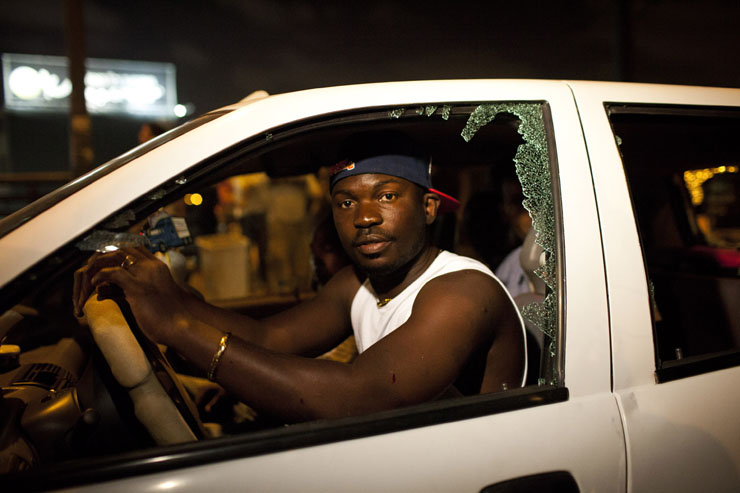
More than a year after it was passed, the High Court of Justice eventually struck down the amendment as unconstitutional and ordered the state to release all those detained under the law within three months. One line in the majority opinion, however, opened a door that the government was determined to slip through. Denouncing the idea of incarcerating someone for three years as a means of deterring others, Supreme Court President Asher Grunis hinted to the government in his majority opinion: “There is nothing preventing a new law allowing incarceration for a significantly shorter period of time.”
And so it was. Instead of releasing the Sudanese and Eritrean administrative detainees as the court ordered, Israel’s government passed a new law within the three-month window, this time authorizing only one-year incarcerations in prison — but with a new trick. They created a new type of prison — which they described as an “open facility,” but that for all intents and purposes is a prison — in which asylum seekers can be indefinitely detained until the state can deport them. Police and immigration authorities started conducting sweeping arrest raids in densely populated African neighborhoods. The Knesset had already made it illegal for asylum seekers to send money out of the country. Instead of renewing the temporary protection documents it had been issuing asylum seekers since 2009, the Interior Ministry began handing out summonses to the new “open” prison, “Holot.”
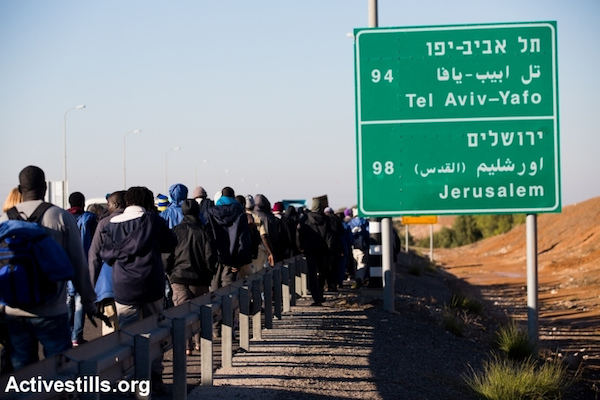
The African asylum seeker community was being pushed into a corner and with each move the government made, they had less and less to lose. Having been released into one prison from another, guarded by the same jailers in the same desert, Holot’s first inhabitants chose to launch a mass act of civil disobedience. They simply walked out and refused to return, marching all the way to Jerusalem to demand their rights. Others followed suit. When the remaining tens of thousands of asylum seekers who hadn’t yet been jailed realized that their fate appeared just as eerily doomed, they took to the streets in the tens of thousands and attempted to leverage the one piece of power they had – a labor strike. Those in prison went on hunger strike.
Where to now?
There is no clear, immediate and tangible next step for either the government or the asylum seekers. The new law was challenged just days after it came into effect and although it could take months or even years, the best chance at changing Israel’s asylum seekers policy still lies in the hands of the High Court. But even if the law is stricken down, and there is no clear indication that it will be, that alone does not prescribe a solution.
The fence that Olmert initiated and that the past two Netanyahu governments built and completed has almost entirely stopped the arrival of new African asylum seekers in Israel. In 2012, over 10,000 Africans crossed the border from Egypt into Israel. In 2013 only 43 made it across. There is no more perceived need for deterring others from coming because they cannot make it across the border. The number of asylum seekers in the country is known and presumably static. Because of those two factors, which the Netanyahu government actually created, there is a unique opportunity to design and implement a holistic solution to the problem this government inherited.

There are two clear policy directions the government could take to address the state’s needs while protecting and respecting the rights of those who are found to be refugees or otherwise require protection.
The first is to continue providing Eritreans and Sudanese asylum seekers with group protection and decline to process their asylum claims. To do so, the state must begin to treat these two groups as if they were recognized refugees. That means granting them the safety of temporary or permanent residency status and the corresponding social and civil rights other non-citizen residents enjoy, including the right to work, health, social benefits and freedom of movement.
Doing so recognizes and accepts that the majority of Eritreans and Sudanese cannot or are not willing to return to their home countries due to a credible fear of persecution, and that until such as those conditions change, they must be treated with the respect, dignity and rights inherent and mandated in any democratic society.
Just and sustainable solutions
The second option is to begin individually examining the asylum claims of each and every Eritrean and Sudanese national currently in Israel (see footnote). In order for that to be an option, however, the state must overhaul its attitudes and procedures toward refugee status determination, including retraining of most of its relevant staff, and creating transparent safeguards.
The Canadian jurist who helped design Israel’s RSD system said that looking at how it turned out, he is “saddened for the asylum seekers, and saddened and embarrassed for Israel.” UNHCR has made clear that Israel’s current model does not meet international standards. “[T]he accelerated processing model in use in Israel lacks the necessary procedural safeguards, including adequate access to an opportunity to appeal a decision,” a recent report said.
But perhaps even more important than a credible, politically independent RSD system, is how the government treats those who are granted refugee status. The state must guarantee recognized refugees all of the according social and economic rights and opportunities, and give them an opportunity to integrate into Israel’s society and economy. The government and people of Israel must accept that although being a refugee is by design a temporary designation, refugees can and often do eventually plant roots and remain in their country of refuge. It must recognize that as long as it is illegal for Sudanese to step foot in Israel, it will not be possible to deport even those whose are denied refugee status for whatever reason.
Once a system of credible, individual RSD is implemented Israel may even be able to deport a sizable number of people who do not qualify as refugees — those who it calls economic migrants.
Israel is a country that was founded by, for and at the expense of refugees. It is also a country that since its inception has relied on cheap, often immigrant, migrant and Palestinian labor to drive its economy. Instead of bringing in tens of thousands of foreign workers as it does now, the government could easily take advantage of the potential asylum seekers and refugee workforce that is already here. This is a country that throughout its history has managed, albeit imperfectly, to integrate wave after wave of Jewish immigration. There is no reason it cannot do the same for a non-Jewish population.
[1] Israel in recent weeks has begun processing a small number of asylum claims, resulting in two out of some 250 applicants receiving refugee status. While that is commendable, the credibility of the RSD and bureaucratic processes remains questionable, as evidenced by the less-than-one-percent recognition rate. This is a good sign, but is only a first step toward fixing Israel’s protection regime.
Update:
On September 22, 2014, the High Court of Justice overturned the second amendment to the Prevention of Infiltration Law, ordering the closure of Holot and the release of its asylum seeker detainees within 90 days. Instead of complying with the order, the Knesset, in its last act before dissolving itself ahead of new elections, passed a third amendment to the law. Under the new law, asylum seekers may be held in Holot without charge or conviction for a maximum of 18 months, and a maximum of three months in a traditional, closed prison.

